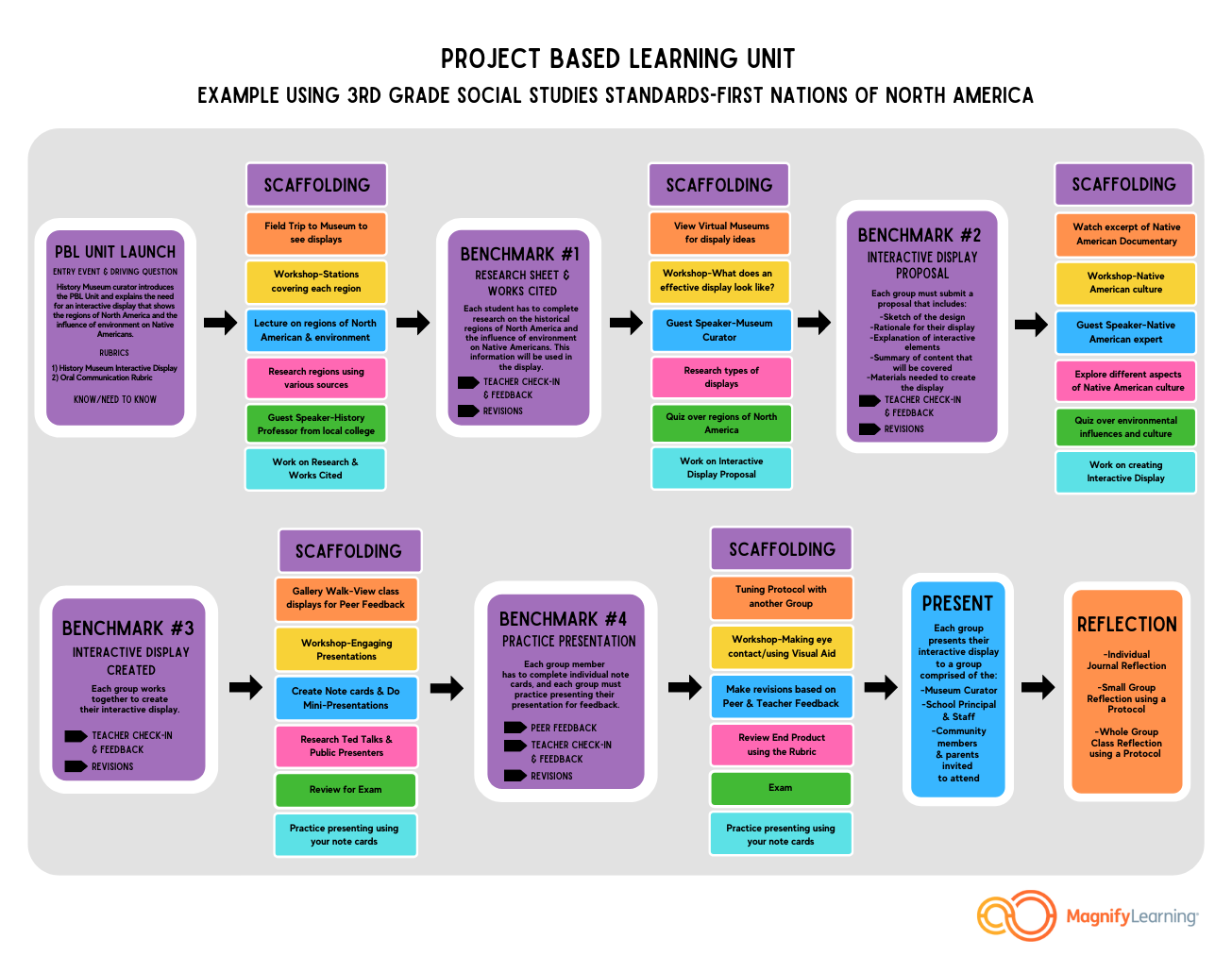What is the Difference between Project Based Learning and Projects?
The primary differences between PBL and traditional projects lie in the process of implementation and the application of standards. A PBL Unit gives students a clear "why" for the learning from the beginning whereas traditional teaching units give the “why” at the end with a culminating project. In PBL, an authentic purpose drives student learning. Students then apply their learning throughout the PBL Unit. In a traditional teaching unit, learning takes place but application is not determined until the end. This page provides an explanation of the key differences between a project and Project Based Learning, as well as graphics to represent the distinct elements that differentiate a PBL Unit from a traditional teaching unit.
👇Download a PBL vs Project Visual and Planning Guide!👇
PROJECT:
A culminating event that happens at the end of a traditional unit after all student learning has already taken place.
The knowledge and skills taught in the unit are not necessarily needed to complete the project, and the project itself does not typically reflect all of the student learning.
Oftentimes the project has no real-world connection, and after being graded the project is no longer used.
In many cases, the major assessment of student learning outcomes has already been completed in the form of quizzes and tests, and the project itself reflects only a few, if any, of the learning outcomes.
PROJECT BASED LEARNING UNIT:
Poses an authentic problem, challenge, need, or issue at the start of the PBL Unit in the form of an entry event.
At the start of the PBL Unit, students either receive or co-design a rubric outlining what tasks or end products they will have to create or complete.
From the start, students understand the need to learn the course content and skills in order to complete each step or benchmark of the PBL Unit.
The end goal is clear from the beginning. Student learning is meaningful because they need to acquire content knowledge and skills in order to solve the problem, challenge, need, or issue that has been posed to them.
The PBL Unit involves a community partner and ends with a publicly presented product that will be used even after the PBL Unit has been completed.
The PBL process involves feedback and revision throughout as well as reflection.
Want a free download of “PBL vs. Projects” graphics PLUS a PBL Unit Planning Form?
Provide your contact info below, and we’ll send it to you directly!
PBL Unit VS. a Project using Standards
The graphics below show the difference between a traditional teaching unit with a culminating project versus a standards-based Project Based Learning Unit. The examples displayed below are based on State of Indiana 3rd Grade Social Studies Standards.







